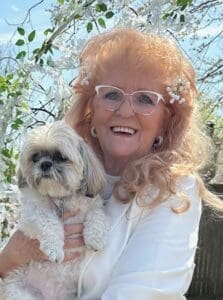By Lisa Moser, K-State Research and Extension news service
Manhattan, KS— When people talk about health, often it is focused on the individual and how they are feeling that day, but a Kansas State University assistant professor says we need to think more broadly on the topic.
“Health is more than simply not being sick or not having an injury, but really it is much bigger than that,” said Kendra Kirchmer, assistant professor of interior architecture and product design. “It’s not just our genes, but it is also our everyday behaviors, our physical environment, and our social networks that are big contributors to our health.”
She said that issues found in the built environment, those places that we live, work, learn, and play, can impact health outcomes in a negative way. For example, limited access to healthy food, lack of transportation networks, and lack of access to jobs that pay enough to meet the cost of living in an area, can all influence a person’s health directly or indirectly. She added that socially there are limitations as well if people don’t have access to places that support community gatherings.
“Healthcare providers are good at addressing the downstream outcomes of these situations, but architects and designers also have a role to play as collaborators and in being advocates for the community upstream during the planning stages,” Kirchmer said. “As designers, we need to work collaboratively across disciplines to create healthy places that foster equity and community where people can build social networks.”
She said rural areas and urban cities with easy access to grocery stores, banks, laundromats and libraries are essential to a community’s well-being.
“Public spaces where people can come together are critical and it is important that they are designed in a way that is inclusive and welcoming, so people know that they do belong there,” Kirchmer said.
On a personal level, Kichmer said there are things people can do to make their home environments better.
“People who love nature can bring plants indoors and allow daylight to enter their space,” she said.
For remote workers, she encourages people to have a dedicated space to support the type of work that they do.
“There is no one-size-fits-all strategy for what you could do at your home, but there are lots of little improvements that can be made. Start by being reflective and taking a minute to assess what is making you feel good right now and what is not, and the solution may be as simple as removing clutter.”













